Innovative Trends in Bottles and Packaging Transforming Sustainability and Convenience
The global landscape of Bottles and Packaging is undergoing a transformative shift as innovation drives sustainability and convenience to the forefront of consumer choices. Recent industry reports indicate that the global sustainable packaging market is projected to reach $700 billion by 2027, highlighting a growing demand for eco-friendly solutions that reduce environmental impact. Moreover, a study by Smithers Pira indicates that companies employing sustainable packaging can achieve a 25% increase in brand loyalty among consumers. As brands adapt to these trends, new materials and designs emerge, optimizing both the user experience and ecological footprint. This evolution not only responds to regulatory pressures but also aligns with changing consumer preferences, making it essential for businesses to embrace innovative approaches in Bottles and Packaging to remain competitive in a rapidly evolving market.
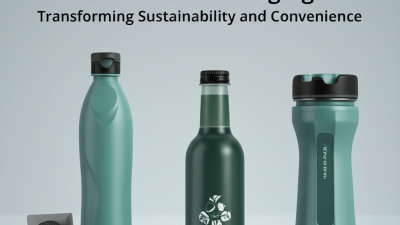
Exploring Eco-Friendly Materials for Sustainable Bottle Production
The shift towards sustainability in bottle production is gaining momentum as manufacturers increasingly explore eco-friendly materials. Traditional plastics, which contribute significantly to environmental pollution, are being replaced with biodegradable alternatives derived from natural resources. Materials such as plant-based bioplastics, recycled PET (rPET), and even innovative innovations like mycelium are paving the way for a more sustainable approach in packaging. These advancements not only reduce the ecological footprint but also promote circular economy principles by increasing recycling rates and encouraging responsible consumption.
In addition to bioplastics, the use of alternative materials such as glass and aluminum is becoming more prominent due to their recyclability and lower environmental impact. Companies are also investing in lightweight packaging designs that reduce material usage without compromising durability and functionality. This commitment to innovative packaging solutions not only enhances convenience for consumers but also aligns with the growing demand for sustainable practices in the industry. As consumers become more environmentally conscious, these eco-friendly options are not just trends but essential elements shaping the future of bottle and packaging production.
Design Principles for Convenient and User-Friendly Packaging Solutions
The evolving landscape of packaging design emphasizes convenience and user-friendliness, which are critical for enhancing consumer satisfaction and promoting sustainable practices. Designers are increasingly incorporating ergonomic features that simplify handling, such as easy-grip surfaces and intuitive closures. These innovations not only improve the user experience but also reduce unnecessary waste by encouraging responsible usage patterns.
Moreover, sustainable materials are becoming integral to the design principles of modern packaging solutions. By utilizing biodegradable and recyclable materials, brands can create products that are both functional and environmentally friendly. This dual focus on convenience and sustainability not only appeals to eco-conscious consumers but also aligns with global initiatives aimed at reducing plastic waste. Ultimately, by prioritizing user-friendly designs alongside sustainability, the packaging industry can drive significant positive change, fostering a deeper connection between consumers and brands while protecting the planet.
Implementing Smart Technology in Bottle and Packaging Innovation
The integration of smart technology in bottle and packaging innovation is leading to significant advancements in sustainability and convenience across various sectors. Recent trends indicate the rapid growth of the fast-moving consumer goods (FMCG) packaging market, projected to reach a value of $1.34 trillion by 2032. This increase is driven by rising consumer expectations for environmentally friendly packaging solutions.
Advanced innovations, such as ultrasonic welding technology for bottle caps, exemplify how even small changes can initiate a broader transformation within the packaging industry.
Furthermore, companies are increasingly adopting smart sensors in production lines to enhance operational stability. This shift allows for maintenance to be conducted based on real-time equipment status rather than a fixed schedule, thus optimizing resource allocation and reducing waste. The emphasis on lightweight and compact packaging solutions is also gaining traction, reflecting a commitment to reducing packaging footprint and promoting a circular economy.
As we move forward, the interplay between smart technology and packaging will likely shape the industry's landscape, aligning business practices with sustainable development goals.
Strategies for Reducing Waste through Reusable and Recyclable Options
As the world grapples with environmental challenges, innovative packaging solutions are emerging to promote sustainability and convenience. One of the most effective strategies for reducing waste involves the development of reusable options. Brands are increasingly designing bottles and packaging that encourage consumers to use them multiple times, thus minimizing single-use plastic. For instance, companies are offering refillable containers for beverages and personal care products, which not only reduce the amount of waste generated but also foster a culture of responsible consumption among customers.
In addition to reusability, recyclable packaging is gaining traction as a key component in sustainability strategies. Advances in materials science have led to the creation of highly recyclable plastics and biodegradable packaging alternatives that can significantly lower the environmental footprint of products. Many brands are now committing to transparency in their production processes and are actively encouraging consumers to participate in recycling programs. By integrating clear instructions and incentives for returning used packaging, companies are effectively closing the loop on waste, paving the way for a more sustainable future.
Trends in Consumer Behavior Driving the Demand for Sustainable Packaging Solutions
The increasing demand for sustainable packaging solutions is significantly shaping consumer behavior. With an accelerating awareness of environmental issues, consumers are increasingly seeking products that come in eco-friendly packaging. The disposable cup and lid market is projected to reach approximately $466.65 million by 2025, highlighting the rising trend in convenience-oriented packaging. The growth of ready-to-eat meals and on-the-go options has further amplified the necessity for efficient and sustainable packaging, as consumers prioritize convenience along with eco-consciousness.
This shift towards sustainability is also evident in the booming market for mushroom-based packaging, expected to grow at a compound annual growth rate of over 9.4% from 2025 to 2034. As consumer lifestyles change and the demand for convenient, ready-to-eat meals rises, packaging solutions are evolving to meet these needs while remaining environmentally friendly. Additionally, the growth of markets such as microwave food containers and plastic frozen food packaging underscores the importance of innovation in both design and materials, catering to the environmental preferences of the modern consumer.
Related Posts
-
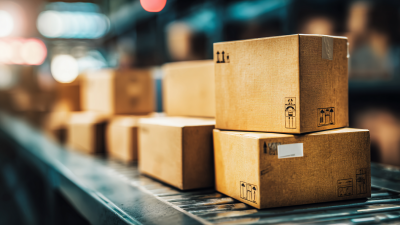
The Essential Guide to Choosing the Right Packaging Supplier for Your Business Needs
-
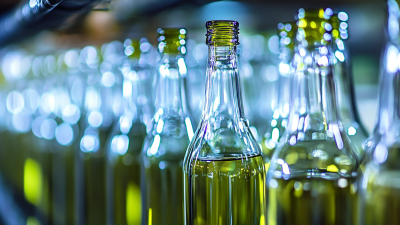
Unlocking Efficiency: The Advantages of Premium Bottles and Packaging for Global Sourcing
-
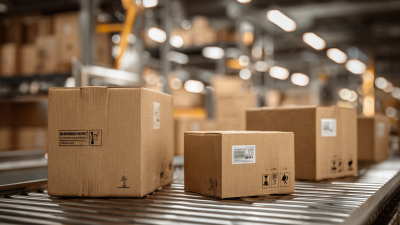
5 Essential Tips for Choosing the Best Packaging Supplier to Maximize Your ROI
-

Navigating Global Standards in Packaging Business Certification for Import Export Success
-

10 Essential Tips for Achieving Quality Packaging in Your Business
-
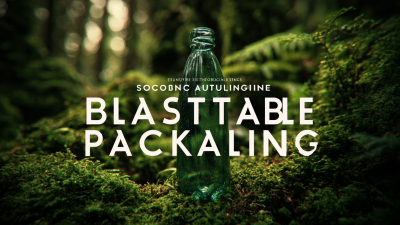
Exploring Sustainable Alternatives to Traditional Plastic Bottle Packaging for Global Buyers
CONTACT US
|
